

-
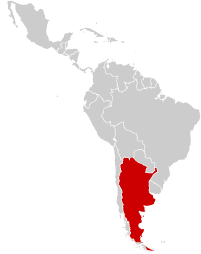
Argentina
General José Félix Uriburu (1930-32) and
Pedro Pablo Ramírez (1943-46)
Eduardo A. Lonardi Doucet (1955-58)
Overthrew Peron in 1955, deposed two months later by General Pedro Eugenio Aramburu who ruled for three years. Aramburu is later kidnapped and killed in 1970 by the Montoneros in retaliation for his murder of a Peronist-General.
Juan Carlos Onganía (1966-70), a month into his regime ordered La Noche de los Bastones Largos ("The Night of the Long Police Batons"), beating and arresting University professors and students. Overthrown by General Roberto M. Levingston (1970-71) who was then deposed himself by General Alejandro Agustín Lanusse (1971-73).
Jorge Rafael Videla (1976-83)
One of the leaders of the Military Coup, appoints himself president and commences the dirty war. Currently living under House Arrest.
OPERATION CONDOR Alongside the "Dirty War," upwards of 30,000 are "disappeared:" abducted, tortured, killed, their bodies hidden; often their infant children would be kidnapped and adopted by military officers or the wealthy.

-
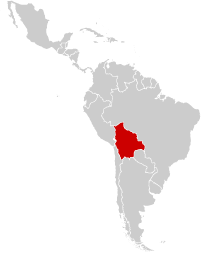
bolivia
A revolving door of generals from 1828 to 1848.
José María Achá (1861-64) lost brief popularity when a governor (and supporter) ordered dozens of opposition leaders executed. Overthrown by the brutal Mariano Melgarejo (1864-71) whose violence was equaled only by his stupidity.
Hilarión Daza (1876-79) Corruption and bacchanalian orgies. Deposed, exiled, and killed.
Carlos Blanco Galindo (1930-31) Called for elections 7 months after being sworn in.
From 1934-39, several rulers, led by the erratic German Busch, attempted to institute "Military Socialism." After Busch's suicide, replaced by the conservative and corrupt Carlos Quintanilla.
Hugo Ballivián (1951-52) and
René Barrientos (1964-69)
The decade of 1969-79 brings several dictators, some populists sympathetic to the left and others right-wing; the last Hugo Banzer (1971-79) is right wing and brutal: kills hundreds, tortures thousands.
Luis García Meza Tejada (1980-82)
Immediately outlawed all political parties, exiled opposition leaders, repressed the unions, and muzzled the press. Believed to have killed 1,000 citizens in 13 months and involved with drug trafficking. Soon resigned.
OPERATION CONDOR Notably, Banzer used the program to assassinate his predecessor, president Juan Jose Torres.

-
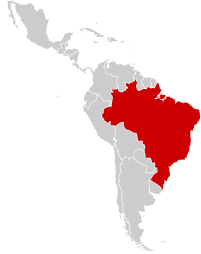
BRAZIL
Deodoro da Fonseca (1889 - 1894) and Floriano Peixoto (1891 - 1894)
A Military Junta (1964-85), supported by the US [principally, the CIA, the ITT corporation], ousts João Goulart. Congress was shut down, political opposition was reduced to virtual extinction, habeas corpus for "political crimes" was suspended, criticism of the president was forbidden by law, labor unions were taken over by government interveners, mounting protests were met by police and military firing into crowds, peasants' homes were burned down, priests were brutalized...disappearances, death squads, a remarkable degree and depravity of torture...the government had a name for its program: the "moral rehabilitation" of Brazil. Kennedy Ambassador Lincoln Gordon refers to this as "the single most decisive victory of freedom in the mid-twentieth century."
OPERATION CONDOR According to a government-sponsored truth and reconciliation commission in 2007, by the end of the 21 years of dictatorship there were 339 documented cases of government-sponsored political assassinations or disappearances. More were interrogated, tortured, and jailed.

-
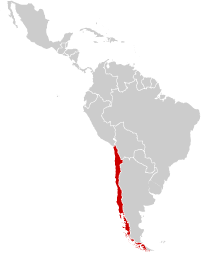
Chile
Luis Altamirano (1924 to 25)
Carlos Ibáñez del Campo (1927 to 31)
Popular due to massive loans from American banks, lost popularity with the Wall Street crash and went into exile.
Augusto Pinochet Ugarte (1973 to 90)
heads coup against President Salvador Allende on Sept 11, 1973. Orders thousands of leftists rounded up, tortured and murdered in the basement of the national sports stadium. Between 5,000 and 30,000 people are believed to have been killed in the operations of Pinochet's regime.
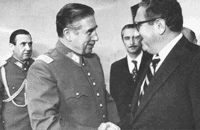
Pictured with US Secretary of State Henry Kissinger
OPERATION CONDOR killed Chilean activists, generals, trade-unionists, and threatened US Congressman (and later NYC Mayor) Ed Koch. The assassination of several people in Washington, D.C. led to the some diplomatic tensions with the U.S. Many Chileans were "disappeared."

-
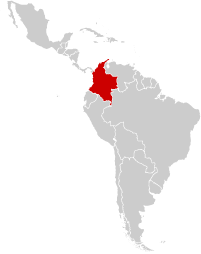
Colombia
Manuel María Mallarino
is appointed to power by an act of congress post-coup
Gustavo Rojas Pinilla (1953 to 57) His rule is marked by violence (for example, a 1954 student protest is put down with 11 students killed), but many of Colombia's democratically elected regimes have been incredibly violent as well.

-
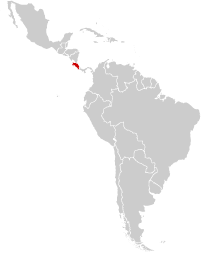
Costa Rica
Jesus Jimenez Zamora was popularly elected in 1863, but dissolved Congress two months into his term of office. He passed on the presidency democratically in 1866, only to launch a coup d'etat two years later and assume the office of president for a second time. This second mandate, in turn, came to an end in a coup on April 27, 1870. Tomas Guardia was one of a group of army officers who deposed President Jimenez. On May 8, 1876 he surrendered the presidency to Aniceto Esquive and reassumed the presidency in 1877. He remained in office until his death. In 1917-19, Federico Tinoco Granados ruled as a dictator. In 1948, José Figueres Ferrer led a coup in the wake of a disputed presidential election; his rule combined welfare measures with harsh repression of labor and virtual elimination of the armed forces.

-
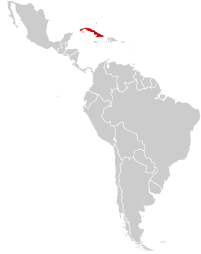
Cuba
Fulgencio Batista
Runs the country after a coup in 1933, but is finally elected in 1940. Installed in power by the US in 1952 and rules until being overthrown by the Cuban Revolution. Complete stooge of US corporations and the American Mafia.
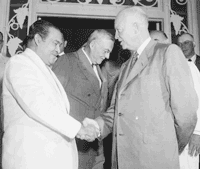
Pictured, Batista with US President Eisenhower

-
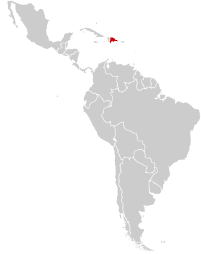
Dominican Republic
Ruled by a series of caudillos for most of the 1800s. The U.S. military occupied the country in 1916, setting up a series of military goverors until withdrawing in 1924. Rafael Trujillo (1930-61) assumed power, in a fraudulent election, after a rebellion against president Urena; he remained in power until his assassination. Trujillo made the Dominican Party the nation's sole legal political party; and various measures were taken to coerce citizens into joining the party. Opponents of the regime were mysteriously killed, and Trujillo is well-known for his policy of racial discrimination, Antihaitianismo ("anti-Haitianism"), targeting the mostly-black inhabitants of his neighboring country and many darker Dominican citizens.
In 1963, the US supports a Coup d'etat against the popularly elected Juan Bosch (who expressed concerns for working-class Domincans); the US sends in 42,000 troops to have Bosch removed and replaced with a series of unpopular politicans and military leaders.

-
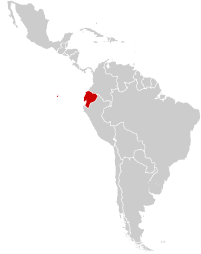
ecuador
A military coup in 1963 to keep the country from going communist, commences with jailing or exiling the entire leadership of the communist left and reorganizing the universities to squash the left. The junta returns power in 1967.
The leader of the 1972 coup, General Guillermo Rodríguez Lara, believed in “revolutionary nationalism” and created state-run companies, often run directly by the armed forces,as part of an effort to replace foreign-produced goods and services with nationally produced goods and services. The state expanded its role in industries such as the telephone service, airlines, tourism, hotels,and steel. In addition, the government joined the Organization of the Petroleum Exporting Countries (OPEC). He is deposed by the military in a series of coups in 75/76. Power is handed back in 79.
OPERATION CONDOR
Ecuador is known to have participated beginning in 1978. It is unclear to the extent, but is believed to have been peripheral.

-
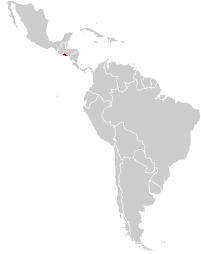
el salvador
From 1885 to 1911, El Salvador was ruled by a succession of generals.
This happened again from 1931 to 1982. Notable dictators include:
Maximiliano Hernández Martínez (1931-34 and 1935-44)
Ruled with a short interruption, systematically murdered several thousand peasants accused of sympathizing with communists (estimates range up to 40k), kept blacks out of the country, and believed in the occult.
Oscar Osorio (1950-56) Targeted labor leaders and students for repression
During the 1980-92 civil war, death squads armed and trained by the Carter and Reagan administrations kill tens of thousands, including the raping and murdering of nuns. After four American nuns are raped and murdered, Reagan still approves human rights' standards in El Salvador.

-
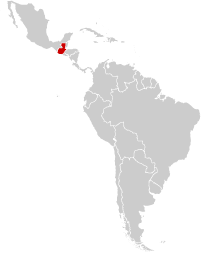
guatemala
Manuel Estrada Cabrera
stages a coup in 1898.
The CIA collaborates with the military to wage a coup in 1954, after which there is a succession of military governments; The military takes power in 1970 with a succession of rulers. The state violence would be difficult to exaggerate: death squads, brutal violence, torture, massacres of women, children, and the elderly. President Reagan meets with military general Efrain Rios Montt, the military general who as president presides over the most severe phase of the genocide, and declares to the press that he is getting a "bad deal" from his critics and that he was "totally committed to democracy."

-
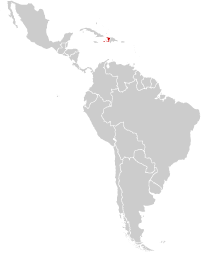
Haiti
The US occupies the country, setting up military governors (1915-1934)
Francois "Papa Doc" Duvalier (1957-71) and Jean-Claude "Baby Doc" Duvalier (1957-71)
Papa Doc kills upwards of 30,000 politcal opponents and aims to rid the country of communists; upon his father's death, Baby Doc succeeds his rule, continuing corruption and brutality.
Their death squad, the "Tonton Macoutes," often stoned and burned people alive, regularly following such rites by hanging bodies of their victims in the street as a warning to the population at large.
The elected Jean-Bertrand Aristide is deposed in two coups, in 1991 and 2004.

-
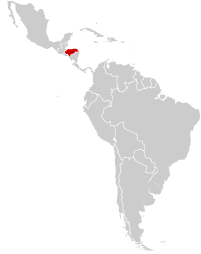
honduras
General Manuel Bonilla
A great friend of the Banana companies, imprisoned his opponents, and suppressed opposition.
The Military Junta of 1956-1957
Oswaldo López Arellano (1963 to 71 and 1972 to 75)
Ousted by a coup in '75 due to "bananagate," when he was caught trying to get $2.5m in
bribes.
Juan Alberto Melgar Castro (1975 to 78)
Policarpo Paz García (1978 to 82)
Supported by both the Reagan Administration, for Paz's support of the Nicaraguan Somoza Dictatorship, and the Medellín Cartel, who financed his coup. Paz created the notorious death squad, Battalian 316, a secret right-wing paramilitary death squad trained by the CIA. The services of Battalian 316 were called upon during the Reagan administration and the American military activity in Central America to support the Contras. Additionally, the Honduran government received a cut of drug profits, as Honduras became a major shipment route of illicit transit. As early as 1981, the DEA's resident agent in Tegucigalpa "rapidly came to the accurate conclusion that the entire Honduran government was deeply involved in the drug trade."
Military Coup (2009 to present)
Elected president Zelaya is expelled from the country in his pajamas. A military junta, led by Roberto Micheletti, instates curfew and represses activists. Within a year, conservative Porfirio Lobo wins a controversial election. US president Obama and secretary of State Hillary Clinton support the coup leaders.

-
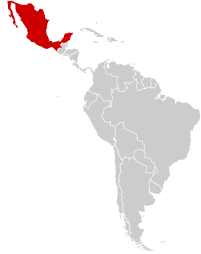
mexico
Porfirio Díaz
(1876 to 80 and 1884 to 1911)
Several years, before he is overthrown in the Mexican revolution, thousands of Rio Blanco miners call on Díaz to arbitrate a labor dispute. Instead, he orders them back to work; the workers continue their strike, a massacre results, with the army killing hundreds of miners before hunting workers, from house to house, and executing the chairman and secretary of the union.

-
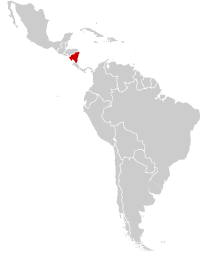
nicaragua
Anastasio Somoza García (1936-56)
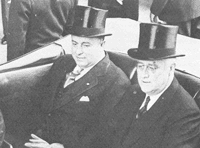
Anastasio Somoza García with President Franklin Roosevelt
Luis Anastasio Somoza Debayle (dictator from 1956-79)
Toppled by Sandanistas and eventually assassinated in exile in Paraguay.
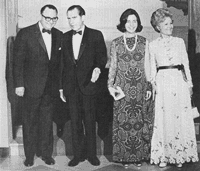
Anastasio Somoza Debayle with President Nixon

-
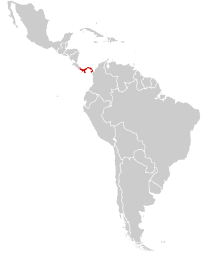
panama
All presidents during this time were appointed by either General Omar Torrijos or General Manuel Noriega
From 1946-84, Panama hosts the US's School of the Americas; its graduates include dictators and deaths squad leaders across the hemisphere, including Noriega, El Salvador's Roberto "Blowtorch Bob" D'Aubuisson, Bolivia's Hugo Banzer, and Guatemala's Efrain Rios Montt. There are unconfirmed reports that the hub of Operation Condor's interstate communication system, "Sistema Condor," was located on the U.S. military base in the Panama Canal Zone.
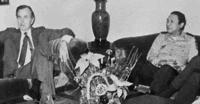
Pictured, George H.W. Bush with General Noriega

-
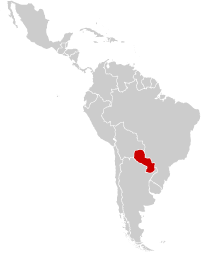
paraguay
Higinio Moríñigo (1940-48)
Selected to serve as president for two months in 1940, Moríñigo decides to stay and bans all political parties.
Alfredo Stroessner (1954-89)
Slavery, torture, murder, for 35 years, Stroessner did it all. The worst you can imagine.
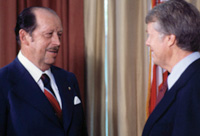
Stroessner with President Carter
OPERATION CONDOR While it is unknown how many were killed under Stroessner, there is consensus that it was brutal.

-
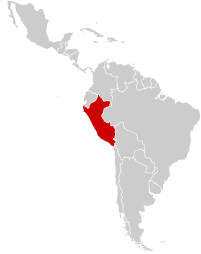
peru
Peru has had over a dozen coup d'etats, often short-lived, sometimes populist. Below is a small sample.
Manuel A. Odria (1948-56)
Modified the penal code to punish "political terrorism" with the death penalty, adopted a draconian Internal Security Law, suppressed opposition party APRA.
Juan Velasco Alvarado (1968-75)
A rare left-leaning dictator, Alvarado stifled some dissent (exiling publishers), nationalized companies, and pursued relations with the Soviet Union. As his health deteriorated, he was overthrown.
OPERATION CONDOR Peru joins in 1978.

-
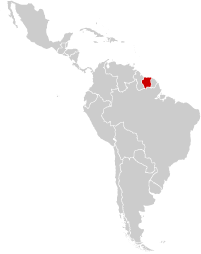
suriname
All presidents at this time were installed by the military regime

-
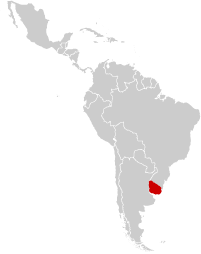
uruguay
Colonel Lorenzo Latorre (1876-79)
Pushed several positive reforms (for example, ending compulsory military service for Afro-Uruguayans), was popular enough to get elected in 1879, but retired to Argentina after declaring the people of Uruguay were "ungovernable."
Gregorio Conrado Álvarez Armelino (1981-85)
In December 2007, Álvarez was indicted for alleged human rights abuses during the dictatorship in which he played a prominent role. In 2009, he was convicted and sentenced to 25 years in prison for 37 counts of murder and human rights violations.
OPERATION CONDOR Coordinating with other Condor countries, the Uruguayan military would kidnaps Uruguayan radicals abroad. Virtually all the Uruguayans kidnapped, around 180 people, are missing to this day.

-
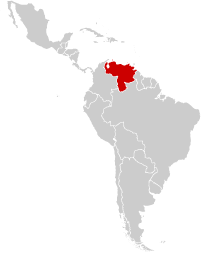
venezuela
José Tadeo Monagas Burgos (1847-51, 55-58)
Juan Vicente Gómez Chacón (1908-35)
Strongman, ended as the richest man in Venezuela, remembered as "instrument of Royal Dutch Shell and Standard Oil."
Marcos Pérez Jiménez (1952-58)
Led a coup, held an election in 1952, lost the election but ignored the results, forced many former associates into exile and tortured, murdered and incarcerated hundreds of other opponents. Many were sent to the Guasina Island prison in the Orinoco jungle. The national university was closed, independent labor unions were abolished, and the press was intimidated. Was forced out in 1958 uprising; later, charged with embezzling $200m.

- Military Dictatorships In The Americas
A project of History Is A Weapon.
Several of the countries featured have complicated histories that betray the simplicity of this design. In some cases, dictators willingly gave up power and restored democratic order; alternately, many "democratic" regimes committed systematic human rights abuses of the worst order. Nonetheless, we strive to capture the anti-democratic periods throughout the Americas.
This is part of a larger project still in the works.
Send suggestions and corrections to thedirectorate at historyisaweapon.com
BETA 0.3
Created December 2010. Edited March 2012. Released September 2012.
|

















































